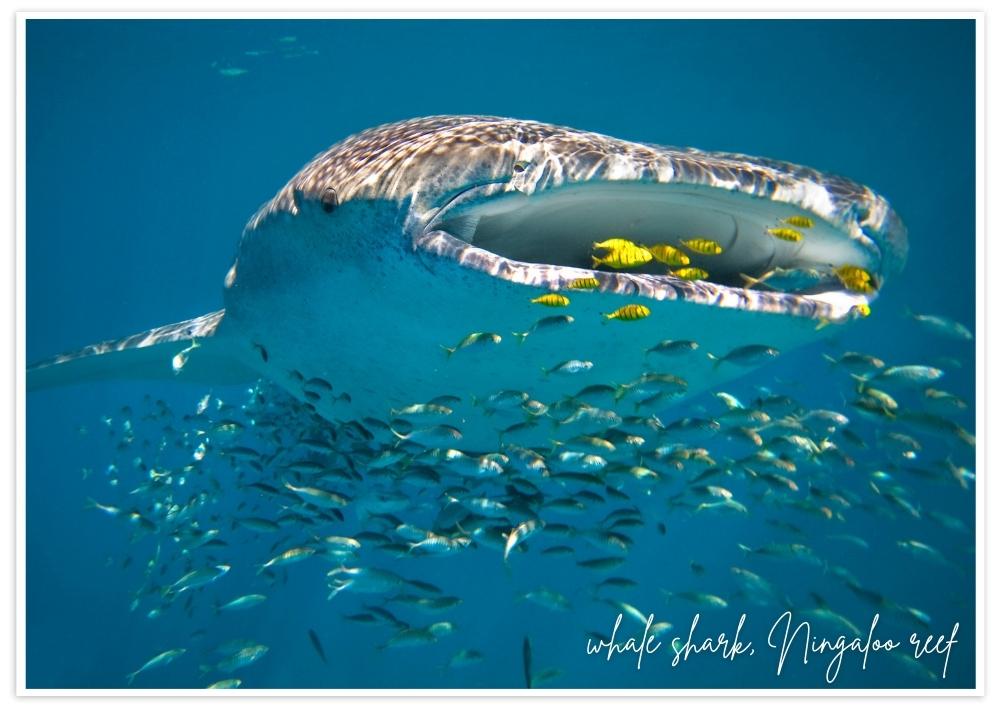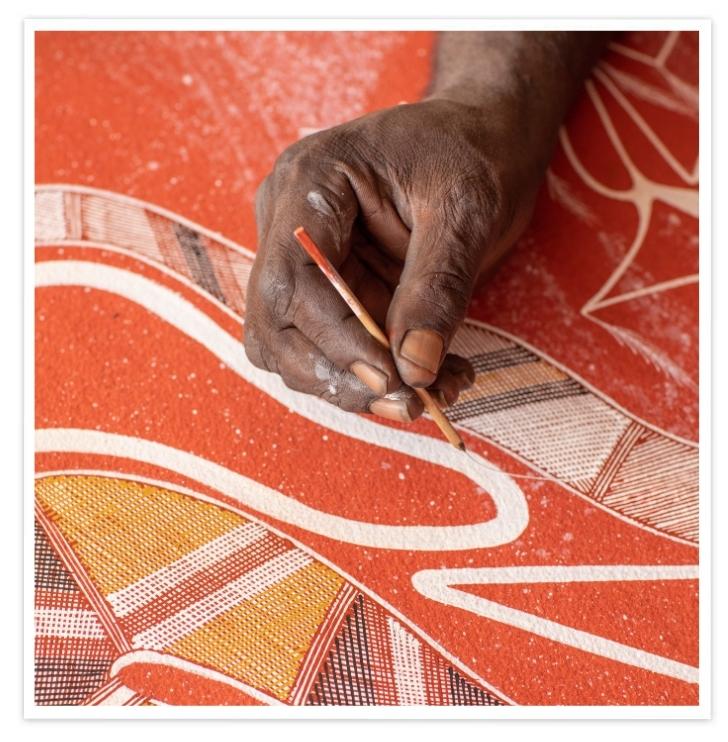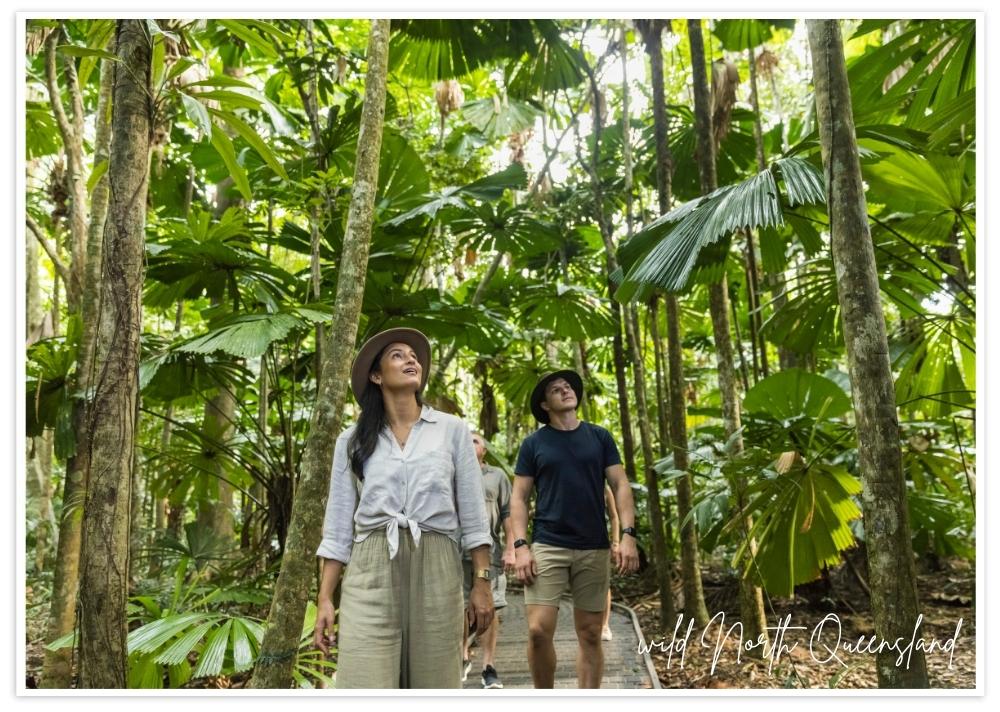Australia with no worries
As Australia prepares to finally open up to tourism, Debbie Ward looks at how you can make sure a trip Down Under really counts by having a positive impact
This is a feature from Issue 8 of Charitable Traveller. Click to read more from this issue.
Why did I choose an echidna when I could have had a plant?’ I ask myself as I look with dread at the multiple spines down it’s back. It’s not my choice of a pet, but of an art subject that’s troubling me.
It wouldn’t be so tricky if I were not painting with a piece of grass. The porcupine-like creature’s spines, by aboriginal teacher Manuel has just told me, will need to be detailed with the finest of the ‘brushes’ he has prepared which, at its tip looks no wider than a hair. Trying hard to keep the grass from bending and smearing the paint, I’m learning just what patience it took for the Aboriginals living out in the outback to create their distinctive art.

At Top Didj, near Katherine in the Northern Territory, my fellow travellers and I have already needed patience to, under Manuel’s guidance, coax a fire from nothing but a thin stick, a piece of wood, and many minutes of careful friction. He grew up living off the land, and it feels a privilege to learn first-hand what that was like, down to how he hunted his favourite food – wallabies. As the site is also a wildlife sanctuary, he reassures us that those hopping around with bandaged feet, accepting slices of sweet potato from our hands are very much off-limits. My first visit to Top Didj is a reminder that Australia is home to both the oldest living creature on earth and to many animals that are found nowhere else on the planet.
It’s a long flight which creates a lot of carbon to get to Australia, which means it’s all the more important to make a trip count. In the last two years Australia has been ravaged by bush fires and seen one of the world’s longest lockdowns due to Covid-19. When borders open in 2022, Australia’s tourism industry will be looking to create maximum benefit with minimum impact. Luckily there are lots of ways that travellers can help acheive this.
Be sure your visit to Queensland's Great Barrier Reef helps to make it thrive by booking a tour with a company that supports coral replanting schemes

ECO TOURING
With so many fabulous landscapes to explore, few visitors to Australia stay in one place. When choosing transport and guiding, look out for Ecotourism Australia accreditation, which covers more than 500 local tour operators who tread more lightly.
Heading into the outback, its best to join companies who are particularly careful about their wwater consumption and impact on the fragile eco systems, like Australian Walking Holidays, which uses camps with water-free loos and solar lighting. In the Red Centre, carbon neutral Uluru Camel tours even bags its’ animals waste to sell as organic fertiliser or for use in paper production.
Most people holidaying in Australia will want to see Queensland’s spectacular Great Barrier Reef but it’s even better if you can use your visit to help it thrive. Coral replanting schemes like the one run by boat tour company Passions of Paradise incorporate the replanting of broken pieces of coral during snorkelling and diving adventures. Artists and scientists behind the reef’s submerged sculpture park, the Museum of Underwater Art, also invites visitors to support the coral replanting.
There are fantastic hiking opportunities through the national parks of Australia but look out for responsible outfits like Tasmania’s Maria Island Walk, which uses camps that treat their own wastewater, run on solar power, and are raised above the ground.
The Blue Mountains, west of Sydney, are a popular walkers’ day trip, meaning they’re at risk of overtourism. As its name suggests, Tread Lightly Eco-Tours lessens the impact of visits by using low emission vehicles and varying itineraries to reduce the erosion of the trails.
In the city you can keep your tours emissions-free by choosing foot or pedal power. Or look out for guides who will take the strain for you, like those of Adelaide’s EcoCaddy, which transports guests on rickshaws powered by renewable electricity.
ABORIGINAL CULTURE
While there are many chances across Australia to but Aboriginal art or watch boomerang demonstrations, it’s far better to seek out projects that directly employ indigenous people and share their culture on a deeper level. In Western Australia’s spectacular Kimberley region you can explore the canyons and striped beehive-shaped rocks of the Purnululu (Bungle Bungles) in the company of the traditional custodians of the area who are employed by Kingfisher Tours. Four days walking Tasmania’s scenic Bay of Fires can similarly be made more meaningful with interpretation from a local Palawa guide from Wukalina Walks.Arkaba Conservatory in South Australia’s Flinder Ranges is home to a successful rewilding project that has turned a former sheep station into a nature reserve. Guests at the lodge can take a two-hour walk with a local aboriginal woman to hear how her ancestors lived off the land.
At Coffs harbour in New South Wales the Gumbaynggirr people are descended from what could be the world’s first stand up paddlers.

You can join them on a SUP tour with a difference, working your way through the Solitary Islands Marine Park on a community-supporting Wajaana Yaam Gumbaynggirr Tour. Even simply strolling around Sydney you can get a non-European perspective on the area through The Rocks Aboriginal Dreaming Tour.
Eco Villas on wildlife rich Kangaroo Island are powered off-grid, built from recycled timber and even furnished with mats made from recycled fishing nets.

BEACH ECO RETREATS
There are some really special retreats Down Under, which have sustainability at heart. The Luxury Lodges of Australia group includes many good examples, often in wilderness settings. But it’s not only in the bush that you can enjoy an eco stay. At tented Sal Salis for instance, you can camp close to the underwater delights of Western Australia’s Ningaloo Reef. Almost all the camp’s power is solar generated and each bathroom has a ‘nature loo’. Banubanu, on an island off the tip of the Northern Territory’s Arnhem Land, is another solar-powered glamping site where guests can dine on chef-prepared bush tucker and watch the local birdlife, while The Tanja Lagoon Camp in New South Wales is set amid a 17-hecare rewilding project.
Don’t fancy sleeping under canvas? New on famous touring route the Great Ocean Road, is the chance to sleep in a SkyPod – a freestanding sustainable cabin with floor-to-ceiling windows overlooking the cliff at Cape Otway. The larger Ocean View Eco Villas on wildlife rich Kangaroo Island, meanwhile, are powered off-grid, built from recycled timber and even furnished with mats made from recycled fishing nets.
SUSTAINABLE VINEYARDS
If relaxing days spent touring vineyards and tasting their wares sounds enticing, check out the many now championing sustainability, particularly in South Australia’s McLaren Cale, about 40 minutes from Adelaide.
You can learn about the vineyard’s efforts on a Small Batch Wine Tours sustainability-themed day trip, o, if you’re self-driving, stay over on site. Family owned Gemtree not only produces organic and biodynamic wines but also has off-grid accommodation. Two self-contained cabins have recently been added with luxuries like king beds, private saunas, and sunken baths, with some of the profits from guests’ stays helping to fund tree planting. You can also sleep at Old Chaff Mill Retreat, another organic and biodynamic winery, which added two suites among the Shiraz vines this year, or at Hillenvale from Hither & Yon, which in February became south Australia’s first certified carbon-neutral wine brand.

WILDFIRE RECOVERY
The sight of the 2020/2021 Australian wildfires, when so many homes and wildlife habitats were lost, moved us all. Wildfires are a natural part of the continent’s regeneration, but these were dangerously intense. If you’d like to do your bit to help, there are some great opportunities to volunteer with the recovery effort in the worst hit areas as part of your holiday.
Exceptional Kangaroo Island is incorporating wildlife surveys into its tours, some using infrared cameras. Participants will also be able to learn about the amazing natural regeneration of the area. A similar ‘citizen science’ project on the Eyre Peninsula, new from Australian Coastal Safaris, will take you e-biking to record koalas, echidnas and goanna lizards. While touring the Eyre Peninsula and Flinders Ranges with Untamed Escapes you could not only have the chance to camp, surf, and swim with the sea lions but also spend half a day planting trees or removing weeds to maintain koala habitats. There’s further koala-friendly tree planting action at You Yangs, near Melbourne, thanks to guests on wildlife trips with Echidna Walkabout Tours. With so many thoughtful ways to enjoy Australia these days, you don’t have to be good at tricky artwork or relaxed about compost loos to make your trip count. And the extra special bonus is that besides helping to preserve culture and nuture nature, the sustainably-led decisions you make wen you book will often lead to deeper, more memorable holiday experiences.
Put out fires
The World Wildlife Fund helps to provide urgent care for injured wildlife and restore habitats ravaged by bush fires in Australia, planting trees that will home koalas.
wwf.org.uk
Read This
In remote Indigenous communities books are scarce and literacy levels are low. This charity gifts appropriate books and helps aborignial people to get published.
indigenousliteracyfoundation.org.au
This is a feature from Issue 8 of Charitable Traveller. Click to read more from this issue.

















 by net effect
by net effect